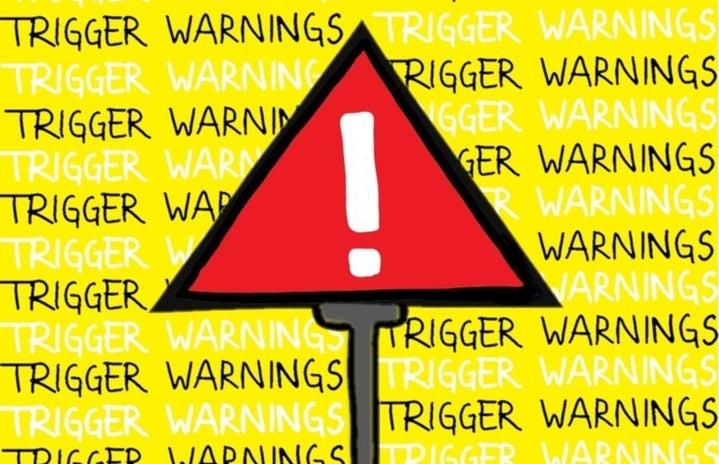I would describe trigger warnings as the forewarning of content that could invoke feelings of distress or anxiety in an individual consuming content. They give individuals the chance to protect their mental health from harm. However, trigger warnings are often dismissed. Critics claim that the world is too sensitive nowadays and that there is no need for these messages of caution. I would disagree. It takes two seconds to issue a trigger warning, but it could save someone a lot of unnecessary anguish or discomfort in a variety of settings, including the following.
Classroom Settings
Trigger warnings need to be a part of lectures discussing difficult and triggering topics. Many courses, specifically those that fall under social studies, discuss topics that are very difficult and sensitive to many. Now, I am not saying that these topics shouldn’t be discussed- not at all. The discussion regarding these topics is imperative to progress and social justice and should be facilitated as much as possible. My issue arises, however, with the delivery of lectures discussing these topics. There needs to be trigger warnings and options for students who do find themselves needing to step out and not hear certain content.
Recently, I found myself in a lecture where the professor started talking about extremely triggering content matter for students, without any warning. They went in depth about a real story involving a traumatizing experience in heavy detail, and it was a very hard discussion to listen to. This took place in an online lecture, where students knew to expect a breakout room conversation with their peers about the content for that day that would be submitted for marks. This incentive to stay to gain those marks causes internal conflict for students who were having a hard time listening to the conversation, because not only were they discouraged from leaving, but they believed that they would be forced to talk about the topic for marks in the course.
Ultimately, no group discussion ended up taking place for that lecture, but students didn’t know this and therefore stayed, listening to the content for the entirety of the class. While a trigger warning for the entire course was issued in the syllabus, there were no options for students who wished to not listen to these topics, just to speak to the professor during office hours if they found themselves overwhelmed, again reinforcing that they needed to put themselves in potential distress to earn their grade. If students interested in taking a course such as this heard that there were no options or warnings for triggering subjects, they may be dissuaded from taking the course and miss out on becoming further educated about important issues.
Media
The media has an extremely worrying grip on the generations of today. With many young adults getting their opinions on politics and polarizing topics solely from social media, and their parents forming their opinions from the news, media holds extreme power over the public. It has been recently used as a tool for creating awareness among society about important issues in our world, which is a great thing.
What isn’t so great, however, is the lack of trigger warnings in many of these forms of media. Shows marketed towards teenagers like Euphoria and 13 Reasons Why have been accused of glamorizing or glossing over topics like sexual assault and suicide, and it has created worry for the emotional stability of teenagers watching the content. Furthermore, the lack of strict age restrictions on these shows allows for these forms of media to be consumed by young children who have access to their parents’ Netflix account. 13 Reasons Why had to issue a further trigger warning before the first episode and remove a graphic scene completely after the response to the content in the show, with even the most emotionally stable viewers being left extremely uncomfortable and anxious and suicide rates among youth spiking significantly after its release.
Ultimately, difficult topics absolutely need to be discussed in order to provide justice and progress in the future, but there is not adequate protection for individuals who are sensitive to these subjects in the classroom, or the media.


